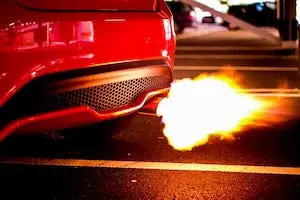Diesel engines operate completely differently from gasoline engines and do not even use spark plugs! They use glow plugs in the place of spark plugs that perform a similar function but are very different in many ways.
Do these glow plugs replace spark plugs? How can an engine operate without spark plugs? So many questions and here is the place where all of the information is condensed nicely to educate you on the questions you like most other people have about diesel engines. Here are the 7 things you should know about glow plugs!
1. The Function of Glow Plugs
A glow plug is a hot surface near the fuel injection area that helps ignite the fuel. Glow plugs are required to ensure that the injected fuel can be evaporated – especially when it is cold. And ignite on the surface of the plug.
Modern glow plugs heat up to extreme temperatures in only a few seconds. Old style glow plugs took 20 seconds or so resulting in the driver to pause before starting the engine.
A higher temperature that the glow plug provides allows the diesel to ignite more easily, and burn more efficiently.
Glow plugs serve to heat up the diesel fuel only when the engine is cool before ignition.
Are glow plugs only used for starting the engine or does it continue to heat after the engine starts?
Diesel engine glow plugs are only used to preheat the combustion chamber prior to starting. Once the engine is running the glow plugs no longer heat up.
How Diesel Combustion Works
To help you understand the role glow plugs play in the starting process, it is helpful to understand how diesel combustion works:
- Clean air comes in.
- Air is compressed to 30-55 bar and during this heats up to 1300-1600°F.
- Diesel is injected into the combustion chamber and the high temps trigger the ignition of the fuel.
Cold starts are extra difficult for diesel engines without glow plugs or some other heating element because the air is not hot enough to ignite the fuel.
2. What Glow Plugs Look Like
What are the spark-plug-like things that diesel engines have?
Glow plugs are the spark plug-like things that diesel engines are equipped with and are not the same as spark plugs although they perform a similar function. Glow plugs heat up the combustion chamber in diesel engines to help the engine start when it is cold. In many diesel trucks the driver must pause to allow the glow plugs to heat up before starting the engine cold.
Glow plugs look similar to spark plugs and are most often in a similar location. Either one plug at the intake manifold, or one plug for each cylinder. Most often trucks have one plug per cylinder.
This video I have included here to show you exactly what glow plugs look like and you may be searching this to be able to locate and replace them. If this is the case, this is the video for you.
3. Glow Plugs Continue to Heat after the Engine Starts
Does the Glow Plug Continue to Heat After the Engine Starts?
Glow plugs continue to heat the engine for up to 3 minutes after starting the engine to keep pollutant and noise emissions to a minimum. The electronically controlled pre-heating starts when the ignition is operated and lasts for 2-5 seconds. The post-start heating time is up to 3 minutes until the coolant reaches 70°C (158 °F).
Glow plugs serve as a temporary heating element while a diesel engine warms up until the engine is able to easily create the high temperatures that are required to ignite diesel fuel.
The engine operating state is registered by measurement of the coolant temperature. The post-heating process is continued until the coolant has reached a temperature of 70 °C, or it will be switched off after a certain time which is set in the performance map. The glow plugs will not continue to heat post-starting if the coolant temperature was already higher than that before starting.
I gathered this information about how long glow plugs continue to heat from Beru a manufacturer of glow plugs.
4. How to Activate Glow Plugs
How do you activate glow plugs?
Diesel engine glow plugs are activated by holding the key in the run position before turning it all the way to the start position. The key should be kept in this position until the glow plug light goes off. On new vehicles, with push button starts, the glow plugs are cycled automatically before the car starts.
Trucks more than about 5 years old have keyed ignitions and the glow plugs are activated in the “accesories” key position. When the key is in this position and the engine is cold, a glow plug signal light will be on until the glow plugs are heated and the engine is ready to start. Then the glow plug light will go off.
Straight from my Ford diesel truck manual:
Cold weather starting: Turn the key to the accessories/run position. If the engine has glow plugs then it should have a light that indicates the glow plugs are on.
This can be applied to most diesel trucks with a glow plug indication light and used generally.
If you have, or are interested in having a newer truck that has a push-start, well then read my other article, Activate Engine Glow Plugs with a Push-Start for a more detailed instruction on how glow plug activation is possible on vehicles with push-starts.
How to activate glow plugs with a key ignition start?
A remote start will automatically activate glow plugs in a truck and if temperatures are cold, the truck will allow the sufficient time for the glow plugs to heat up before starting the engine.
5. Symptoms of Bad Glow Plugs
As a diesel truck owner, you need to know how to recognize when glow plugs have gone bad.
Glow plugs can be simply removed and tested with a glow plug tester, but the tricky part is knowing when to check the glow plugs and recognizing the signs that a glow plug or perhaps multiple glow plugs have gone bad.
How do I tell when glow plugs are bad?
If only one glow plug goes bad, it will be difficult if not impossible to recognize that one is bad just by the symptoms of the car. The best way to tell that glow plugs have gone bad is to regularly checking them. By having them inspected by a mechanic every six months, you will avoid running the engine with bad glow plugs for a long time.
What happens if I drive with bad glow plugs?
Driving with bad glow plugs results in rough cold starts that is hard on the engine. It will result in excess wear on the pistons, cylinders, and the engine overall. It is best to check your glow plugs periodically to avoid ever driving with bad glow plugs. They are relatively inexpensive and easy to replace.
Technically, though you can drive forever with bad glow plugs so long as the engine will start! It just makes it tough in cold weather and puts more wear on the engine until it warms up.
Driving with bad glow plugs since it burns the fuel very inefficiently is also very polluting.
What could cause glow plugs to go bad so quickly?
Constant failure of glow plugs indicates a problem with the electrical system. It may be caused by jump starting the car – high currents can wear out the glow plugs quickly. It can also be caused by another failed component such as engine timing or the glow controller.
6. How to Replace Glow Plugs
You should know how to replace glow plugs when they go bad. It is common for glow plugs to wear out, but fortunately glow plugs are very easy to replace and are generally easily accessible. Glow plugs can be replaced in as little as 30 minutes.
7. Not All Diesel Truck Engines Have Glow Plugs
Not all diesel trucks have glow plugs. A lot of Cummins diesel engines for example have heater grids instead of glow plugs. Heater grids heat the incoming air and are a good alternative to glow plugs that some car manufacturers opt for. What IS necessary is some way to heat the engine so that it can start efficiently.
- Some tractor engines ran off gasoline and then switch to diesel eliminating the need for glow plugs and allowing for easy cold starts!
- Some manufacturers like Cummins have chosen to have alternative heating sources for the cold air intake
For answers to questions like why diesel engines have glow plugs and gas engines don’t, check out my post about gas vs diesel


